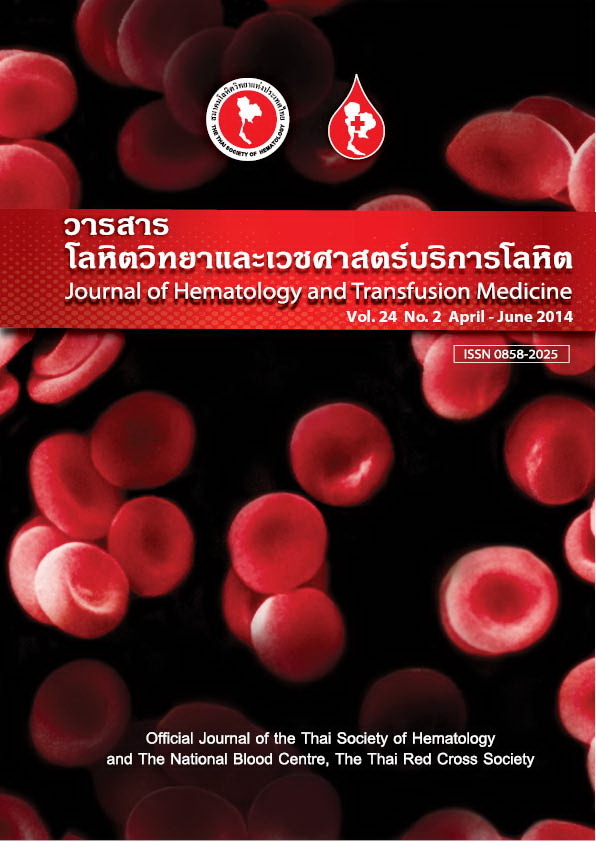A Modified Mixing Test with a Proposed Cutoff Value to Screen for Clotting Factor Inhibitors
Keywords:
Mixing test, Clotting factor inhibitor, Lupus anticoagulants, Survival, สารต้านปัจจัยการแข็งตัวของเลือดAbstract
Abstract
Background: Mixing studies are helpful for clotting factor inhibitor screening in cases with activated partial thromboplastin time (APTT) prolongation. However, the standard consensus procedure is lacking. Objective: The aim is to develop a sensitive inhibitor screening assay in bleeding patients. The test is preferably insensitive to lupus anticoagulants (LA) in this setting. Methods: Plasma samples investigated for APTT prolongation(N = 90) were tested for factor VIII or IX inhibitors and LA. Positive mixing was defined as an ability of one part of patient plasma to prolong APTT of one part of pooled normal plasma (PNP) after 2-hour incubation. Two controls, which were also incubated for 2 hours, were 1) PNP mixed with test plasma immediately before the APTT test and 2) PNP mixed with buffer. Time-dependent inhibitors showed longer clotting time than those of 2 controls, while time-independent inhibitors had similar clotting time to the first control but longer than the second control. Three lots of APTT reagents were investigated. Results: There were 18 (20%) clotting factor inhibitor cases. The mean titer was 1.7 ranging from 0.67 to 4.0 Bethesda units. Fifteen samples of LA were regarded as negative. The most appropriate cutoff was the APTT ratio difference of 0.10 or higher. The mixing study using any lots of APTT reagents showed 100% sensitivity for clotting factor inhibitors. The sensitivity for LA was lower. The majority of factor inhibitors were time-dependent, while the LA inhibition was mostly immediate. One lot of the reagent displayed 93.1% specificity, but the other 2 lots showed higher false positive rates. Conclusion: We described a sensitive screening test for clotting factor inhibitors. However, optimal lots of APTT reagents need to be determined to obtain excellent specificity.



